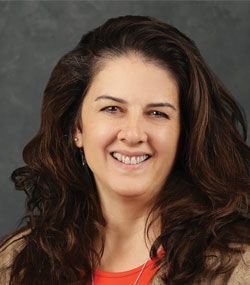
Acronyms are a huge part of our lives. We have been using acronyms on our farms for as long as I can remember. It feels like BMPs, SOPs, and NRCS have always been in our language.
When I joined the Chesapeake Bay Ag Workgroup a few years ago, I was bombarded with a set of new acronyms to learn. I haven’t even come close to remembering all of them, but I keep my glossary beside me at meetings.
I recently got an invitation from a friend; her last sentence was RVSP ASAP. LOL. I am pretty certain that does not fall under the category of complete sentences, and the English teacher Karen and I had many years ago would have a lot to say about the lack of structure. At the same token, everyone who received the invitation knew exactly what to do.
Our pastor even jumped on the acronym wagon to drive his point across. He gave us an acronym for the initials GIGO to make it easier for us to remember “garbage in, garbage out.” He will be happy to know that it has worked.
Thanks to cell phones, social media, and texting, abbreviations have also become a huge part of our day; much of our communication is shortened so we can say more with less characters.
However, I am not convinced that shortening words means it is easier to understand. If I were a millennial or younger, it wouldn’t be a problem. Figuring out a shorter way to say something or understanding acronyms is a talent that seems to be automatically built into the younger generation’s DNA. Which, in case you were wondering, stands for deoxyribonucleic acid. I bet you feel a lot smarter with that knowledge tucked in your back pocket.
We aren’t as savvy when it comes to abbreviations. There was the time Duane replied to a comment on Facebook and he wanted to include a hashtag, which is the thing to do right now. He couldn’t find the hashtag icon on his phone, so he just typed out the word instead.
Then again, Duane has never been a corner-cutter. He’s never been one to shorten sentences, and he attacks work with the same completeness.
Cutting corners doesn’t work on the dairy farm. I do not want condensed communication, and I certainly do not want employees using less brain cells and causing confusion.
Using shorter methods might save time in that particular hour, but we all know that cutting corners and doing a long job in a shorter amount of time does not necessarily save time, energy, or animals’ lives in the long run.
We have a SOP on the farm that I can instantly tell when the corner is cut. We have a strict colostrum protocol, and I know early on if someone was not compliant.
These SOPs are critical to the calf’s first few weeks. If I have a group of calves at the hutches that can’t get over scours, don’t have a good appetite, and constantly need attention, I know someone wasn’t following protocol.
Supplementing the milk takes a bit more time and more energy, and it takes brain cells to remember to do the chore. Shortening that chore is risky because that calf will not get the proper nutrition it needs. I hate spending unnecessary time trying to keep a calf alive. Of course, I will spend the time, as we give fluids, electrolytes, and treat them when needed. But that was time that I unnecessarily gave away. Time that could have been avoided if the few extra minutes would have been followed through at the start.
Acronyms and abbreviations are cool, catchy, and fun to figure out, but when it comes to communication on the dairy, I need to make sure that there is full understanding on what needs to be done.
There are times when I look at the condensed language, and I find that it takes more brain time to pause and decipher the meaning than it would to spell it out. I also find myself distracted by the acronym, and since I don’t know what it stands for, I make up my own translation. This can be dangerous.
I recently heard Trace Sheehan speak about his new documentary film, Food Evolution. This talented, young movie writer and producer created a film around one of the most debated acronyms, GMO.
The movie is well done, informative, and bases his findings on common sense, truth, and science, not fear and misinformation. In his presentation, he referenced BIOTECH and, in jest, Trace shared an acronym that he uses to describe BIOTECH: Blast Information Out ‘Til Everyone is Confused and Hangry.
He brilliantly uses his skills to communicate the truth about science and technology in agriculture and what it means for the world population, which is something we desperately need to communicate with clarity and completeness. You can find the movie trailer and Food Evolution info at www.foodevolutionmovie.com.
Common Threads is a regular column in Hoard's Dairyman. The author and her husband, Duane, own and operate a 550-cow dairy in Cochranville, Pa.






